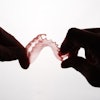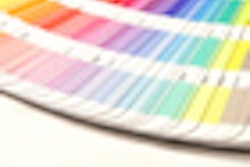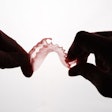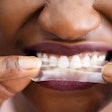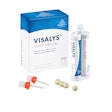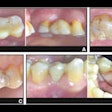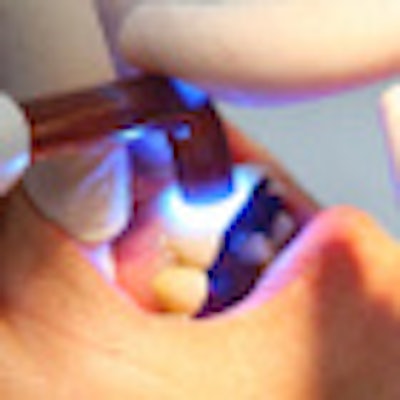
Accurate shade matching is one of the primary challenges of aesthetic dentistry. Now researchers of a new study -- sponsored by Ivoclar Vivadent -- who tested several aesthetic restorative materials have found that most exhibited a perceptible color change after polymerization (Journal of the American Dental Association, June 2011, Vol. 142:6, pp. 658-665).
Researchers from the department of restorative dentistry at Atatürk University in Turkey conducted the study to evaluate aesthetic restorative materials' color differences after setting and color matching between set materials and a shade guide.
"It is a difficult to match the color of a tooth and restoration," said lead author ÇaĞatay Barutcigil, DDS, in a DrBicuspid.com interview. "This concern is the base of our study."
Dr. Barutcigil and his colleagues evaluated 13 resin-based composites, one silorane-based composite, two polyacid-modified resin composites, and one conventional glass ionomer cement. They measured the color of the samples before and after they were set and compared the final colors of the restorative materials with a shade guide.
The color parameters of the samples -- which were 8 mm in diameter and 1.5-mm thick -- were measured according to the International Commission on Illumination (CIE) L*a*b* color scale relative to standard illumination against a white background using a dental colorimeter.
The U.S. Public Health Service (USPHS) has determined that 3.7 is the clinically acceptable Delta E value, which is the criteria used by the authors to determine the clinically acceptable limits for color match. Delta E = (Delta L + Delta a + Delta b), where Delta L stands for difference between lightness values, Delta a stands for difference between redness values, and Delta b stands for difference between yellowness values.
“Dentists should prefer set material rather than unset material or shade guides for shade matching.”
— ÇaĞatay Barutcigil, DDS
With the exception of Fuji IX (GC), Filtek P60 (3M ESPE), and Te-Econom (Ivoclar Vivadent), the restorative materials exhibited a perceptible color change after setting, the researchers found. And with the exception of Filtek Supreme XT and Fuji IX, the materials exhibited a perceptible difference when compared with the Vita shade guide.
"Most of the materials tested exhibited a significant color change after polymerization and did not match the shade guide tab after undergoing light curing," the authors concluded.
The unique feature of this study is that it looks at a lot of materials at the same time, especially silorane, according to Dr. Barutcigil. Although studies on silorane's mechanical properties have been conducted, there is a dearth of research about silorane's color change in the literature, he and his colleagues noted.
Unexpected findings
Nevertheless, the researchers were surprised at their findings. The color change in the materials after setting was unexpected because they did not expect these values to be higher than perceptible color change, Dr. Barutcigil said.
"Color changes after setting and color differences with shade guides indicate that dentists should prefer set material rather than unset material or shade guides for shade matching," he said.
However, William David Browning, DDS, from the Indiana University School of Dentistry who has done similar research (Journal of Dentistry, 2009, Vol. 37:suppl 1, pp. e34-e39), had some concerns about the methodology used in the study.
For example, a specimen thickness of 1.5 mm would be so thin that any color in the background would affect the color readings made with the colorimeter, he pointed out.
"The literature includes articles on this subject that use specimens thick enough to be unaffected by background color," Dr. Browning said. "These articles are more relevant and more directly applicable to clinical practice."
In addition, he said, the article describes the use of a single A3 Vita tab, while literature has shown that there are variations in the same shade tab from different shade guides.
"The present study assumes that a single A3 tab is sufficient to establish a color standard for the experiment," he said. "The literature contains reports of studies that use multiple shade tabs to establish a standard rather than one."
The use of multiple shade tabs allows for a comparison between the color differences of a particular composite to the amount of color difference found between the same tab from different shade guides, he explained. A composite that varies from the standard by less than the amount of variation in color from tab to tab is a good match.
Finally, the authors use the USPHS standard of a Delta E of 3.7 as their guideline for what constitutes an acceptable clinical match, and while this standard is part of the established literature, it defines substantial color differences as acceptable, Dr. Browning said.
The ADA has established a Delta E of 3 and 4 as the standard for over-the-counter and dentist-prescribed bleaching products, respectively, which implies that these changes represent a color difference easily observable by eye.
"Accordingly, the use of a Delta E of 3.7 as the standard for an acceptable match in this study would tend to underestimate the degree to which the products tested failed to match the Vita A3 tab," Dr. Browning concluded.


